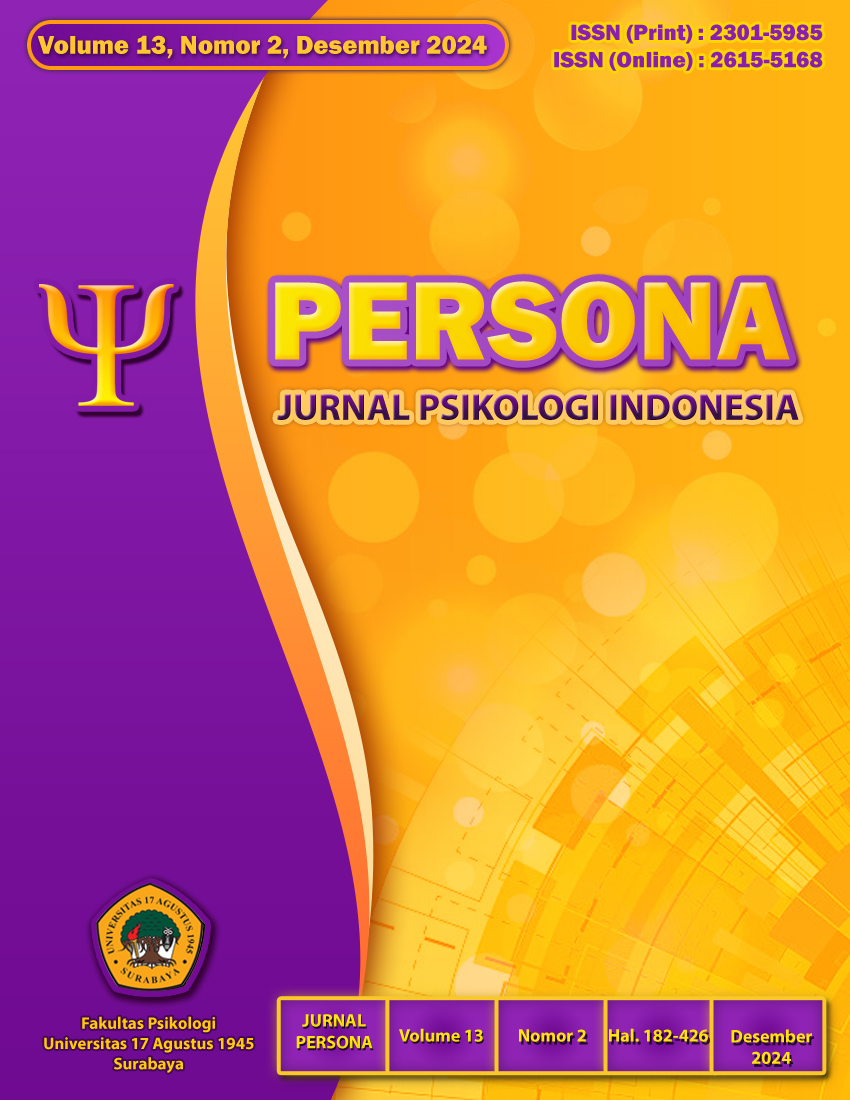Dark triad personality dan kualitas kehidupan kerja karyawan yang bekerja secara hybrid: Kepemimpinan empowering sebagai mediator
Dark triad personality and quality of work life of hybrid employees: Empowering leadership as a mediator
DOI:
https://doi.org/10.30996/persona.v13i2.10614Keywords:
dark triad personality, empowering leadership, quality of work lifeAbstract
The COVID-19 pandemic has made changes to various sectors, including ways of working that are now more widely adopting a hybrid model, which has an impact on the quality of an individual's work life. A supervisor's personality and leadership style play an important role in this. The purpose of this study is to empirically measure the role of empowering leadership as a mediator between the dark triad personality and the supervisor's leadership style. as a mediator between the personality of the dark triad and the quality of work life of hybrid employees. employees who work in a hybrid manner. Data were collected online from 217 employees from various agencies and positions, using a purposive sampling method. The data collection method uses three types of scales, namely the quality of work-life scale (α=0.861), the short dark triad personality scale (α=0.849), and the empowering leadership scale (α = 0.91). Data were analyzed using mediation analysis using JASP 0.16.2.0 software. The results of data analysis show that empowering leadership can significantly mediate the relationship between narcissistic personality and psychopath personality on the quality of work life. Empowering leadership does not have a mediating effect on the Machiavellian personality and the quality of work life. This research in organizations implies that the perception of the quality of work life of employees with narcissistic and psychopathic personalities can be changed through the role of leaders who have an empowering leadership style.
Downloads
Downloads
Published
Issue
Section
License
The author who will publish the manuscript at Persona: Jurnal Psikologi Indonesia, agree to the following terms:
1. Authors retain copyright and grant the journal right of first publication with the work simultaneously licensed under a Creative Commons Attribution ShareAlike License that allows others to share the work with an acknowledgment of the work's authorship and initial publication in this journal.
2. Authors are able to enter into separate, additional contractual arrangements for the non-exclusive distribution of the journal's published version of the work (e.g., post it to an institutional repository or publish it in a book), with an acknowledgment of its initial publication in this journal.
3. Authors are permitted and encouraged to post their work online (e.g., in institutional repositories, pre-prints sites or on their website) prior to and during the submission process, as it can lead to productive exchanges, as well as earlier and greater dissemination of published work






